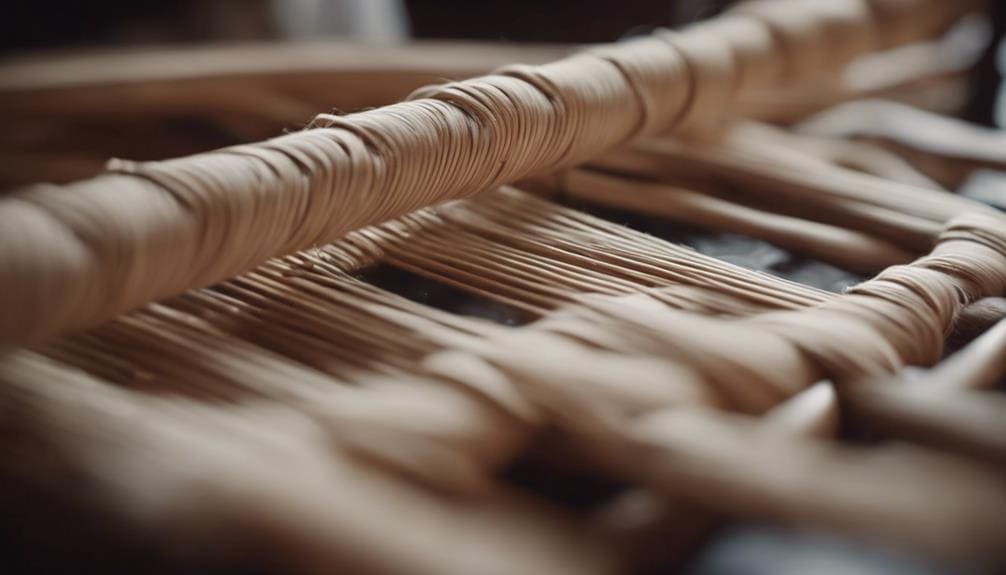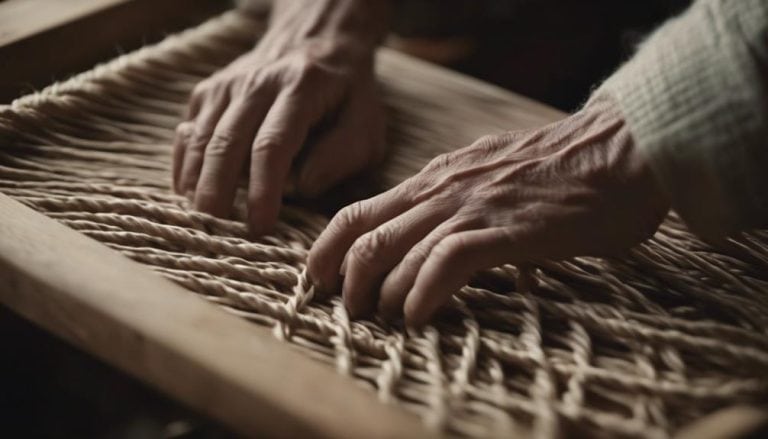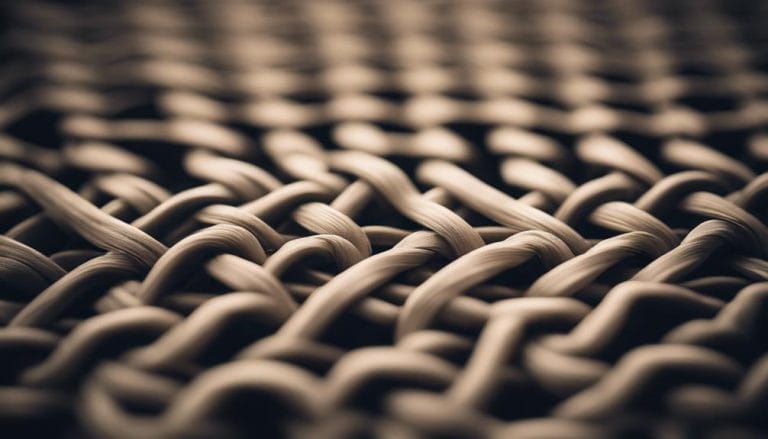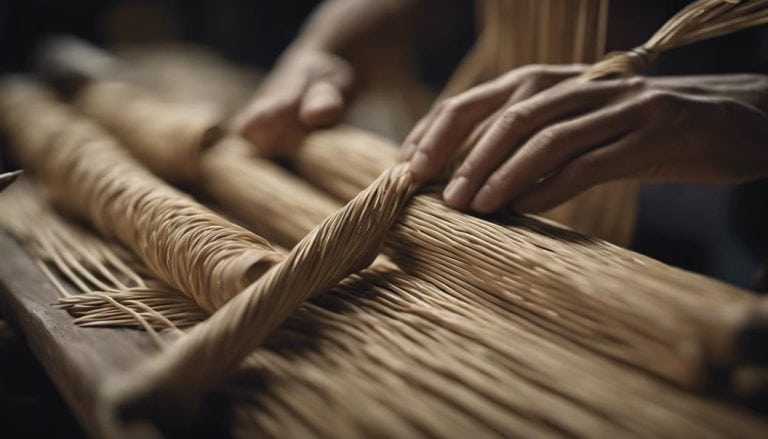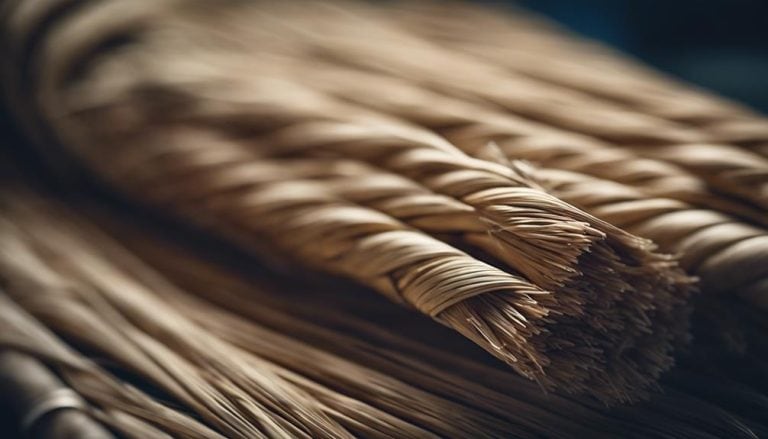Danish Cord Weaving Techniques Explained
As I unravel the intricate threads of Danish cord weaving techniques, it’s like deciphering a complex tapestry woven with precision and care. Each knot and twist reveals a story of craftsmanship and dedication, offering a glimpse into a world where tradition meets innovation.
By exploring the nuances of this age-old art form, one can unlock a realm of possibilities for creating functional yet beautiful pieces. Join me as we unravel the secrets of Danish cord weaving, where every strand holds the key to mastering a timeless craft.
Danish cord weaving techniques are intricate and traditional, showcasing skilled craftsmanship. They involve weaving paper cords around a frame to create beautiful and durable furniture pieces.
Key Takeaways
- Danish Cord weaving involves twisting paper into a durable rope for traditional and contemporary furniture.
- Essential tools like Danish nails and spring clamps aid in maintaining cord strength and appeal.
- Weaving frame setup ensures consistent tension and alignment for a seamless seat structure.
- Advanced patterns like Moller weave and envelope weaves elevate craftsmanship and chair-making skills.
History of Danish Cord Weaving
Danish Cord Weaving emerged from the rich tapestry of Danish furniture design history, weaving a legacy of craftsmanship and innovation into the fabric of the early 20th century. The origins of Danish cord weaving can be traced back to traditional designs prevalent in Denmark during that time. This weaving technique involves intricately twisting treated paper into a three-ply rope, creating a strong and visually appealing material.
Danish cord weaving was a common feature in traditional Danish furniture due to its durability and aesthetic charm. The method became synonymous with quality craftsmanship and attention to detail. As the years progressed, this weaving style gained popularity beyond furniture making, finding its way into modern designs for its unique texture and strength.
Exploring the history of Danish cord weaving unveils a journey of innovation and artistry that continues to influence contemporary design trends. The fusion of traditional techniques with modern aesthetics has ensured that Danish cord weaving remains a timeless and versatile craft in furniture design.
Tools and Materials Needed
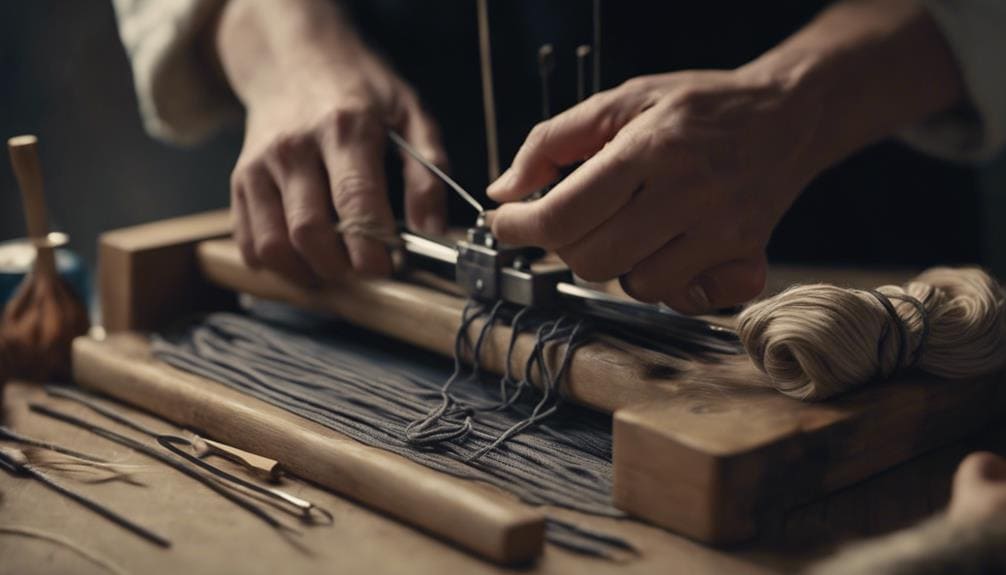
Equipped with Danish nails, spring clamps, a tack hammer, and optional tacks for chair repair, the tools needed for Danish cord weaving are essential for achieving a seamless and durable finish. When embarking on a chair restoration project, the right tools can make all the difference.
Cord selection ensures the final product’s strength and aesthetic appeal. Different weaving styles may require specific cord types, so it’s essential to choose wisely. The weaving process involves intricate steps, from removing the old cord to securing the new one using Danish nails and spring clamps.
For chair repair, optional tacks can reinforce weak spots and ensure longevity. These tools aid in weaving and play a crucial role in maintaining the chair’s integrity. With the proper materials and tools, weaving Danish cord becomes a gratifying journey of restoration and craftsmanship.
Preparing the Weaving Frame
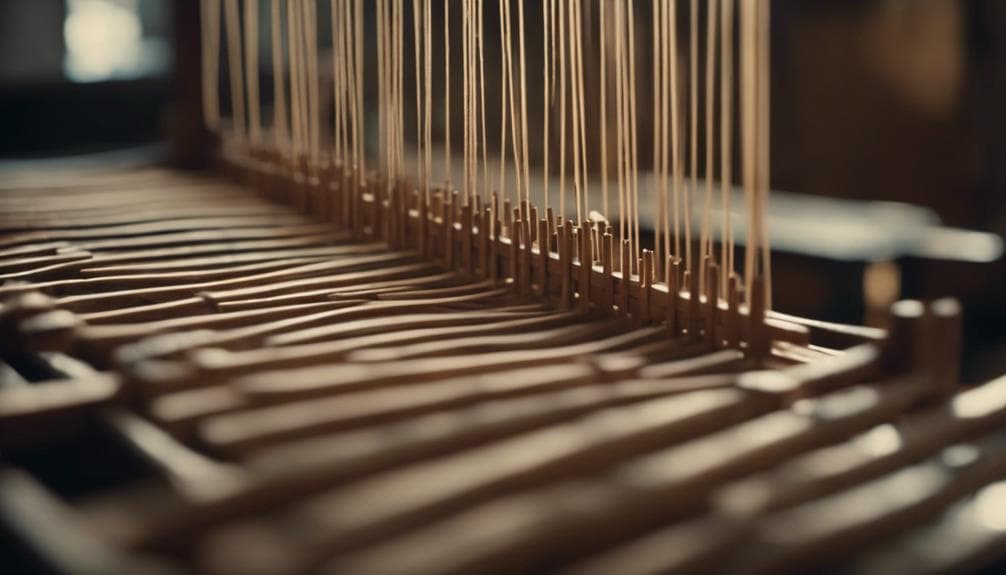
Ensuring the weaving frame’s solidity and stability is paramount before embarking on the Danish cord-weaving process.
Preparing the Weaving Frame:
- Frame Stability: Before starting, ensure the frame is sturdy and secure to withstand the cord’s tension during weaving.
- Cord Tension: Maintain consistent tension while weaving to achieve a uniform and professional finish.
- Knot Tying: Secure the cord firmly to the frame using appropriate knots to prevent slippage and maintain alignment.
- Frame Alignment: Match the original spacing and pattern of the cord for a seamless re-weaving process. Use tools like spring clamps and tack hammers to securely hold the frame and materials in place.
Basic Weaving Techniques
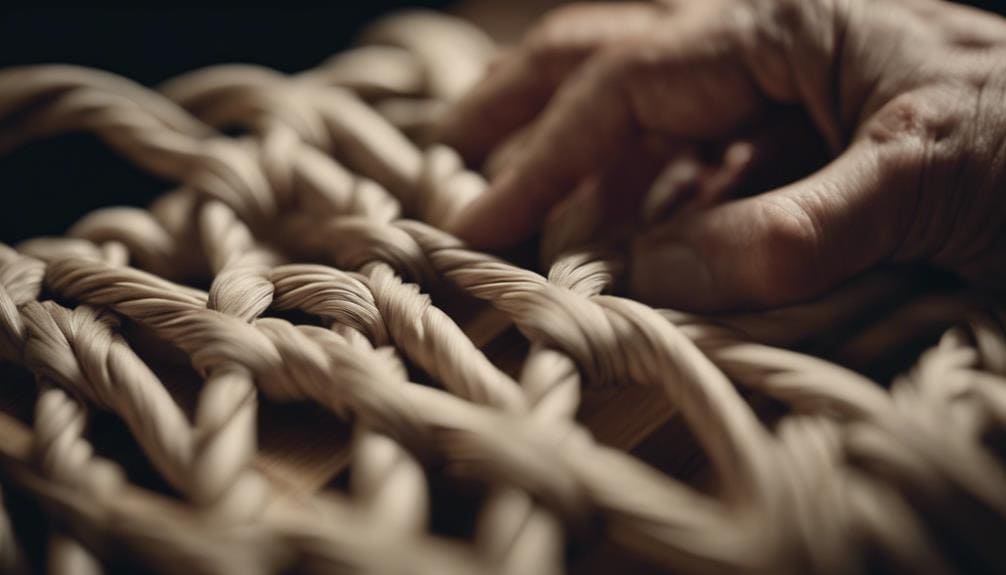
As I delve into weaving, mastering the basic techniques forms the foundation for creating intricate Danish cord designs. Tension control becomes my ally, ensuring each warp and weft cord aligns perfectly.
Weaving tips whispered through the process guide my hands, reminding me of the importance of maintaining even spacing for that impeccable finish. Understanding the intricacies of warp and weft, I start to see the dance of cords intertwining to form the seat’s structure.
With each cow-hitch knot securing the warp to the rails, I feel a sense of accomplishment, a step closer to weaving magic. Wrapping the cord around the front and back rails, I weave with purpose, following the pattern that promises beauty and durability.
The relationship between warp and weft cords reveals itself as I weave, showing me the path to intricate designs waiting to unfold. Danish cord weaving is about creating a seat and embracing a tradition that weaves together artistry and craftsmanship.
Advanced Weaving Patterns

Venturing into advanced Danish cord weaving unveils a tapestry of intricate patterns and techniques that push the boundaries of craftsmanship and design. Delving into these advanced weaving patterns enhances the visual appeal of Danish cord seats and elevates the complexity of chair-making skills to new heights.
Here are some expert tips to master these intricate designs:
- Moller Weave: Explore the unique over-under technique of the Moller weave to create mesmerizing patterns that add depth and texture to your Danish cord projects.
- Warp and Weft Mastery: Understanding the nuances of warp and weft is essential for mastering advanced weaving patterns, allowing you to weave with precision and finesse.
- Envelope Weave Patterns: Embrace envelope weave patterns, commonly used in advanced chair weaving with Danish paper cord, to achieve sophisticated, intricate designs that set your work apart.
- Craftsmanship Enhancement: Learning advanced weaving patterns enhances the visual appeal of Danish cord seats and elevates your craftsmanship, showcasing your dedication to the art of weaving.
Finishing Touches and Maintenance

To achieve a flawless finish and ensure the longevity of Danish cord seats, mastering the art of applying various finishing techniques is paramount. Regarding Danish cord seats, the traditional soap finish is a popular choice for its unique look and feel.
This finish adds a touch of authenticity and enhances the overall aesthetic appeal of the woven seat. Moreover, exploring different finishing options can provide an excellent opportunity for personalization, allowing you to tailor the look of your Danish cord seat to suit your style and preferences.
In addition to choosing the right finish, regular maintenance is key to preserving the beauty of Danish cord seats. A simple cleaning routine involving a damp cloth can effectively remove dust and debris, keeping the seat fresh and vibrant.
By incorporating proper care and finishing techniques into your routine, you can significantly prolong the lifespan of your Danish cord woven seats, ensuring they remain in top-notch condition for years to come.
Frequently Asked Questions
What’s the Difference Between Laced and Unlaced Danish Cord?
I prefer laced Danish cord for its visible seam and traditional twist pattern, while unlaced Danish cord appeals to me with its smooth, seamless look. The choice between laced and unlaced depends on the chair’s style and desired aesthetics.
What Is the Nail Spacing for Danish Cord Weaving?
I ensure proper nail spacing for Danish cord weaving, maintaining tension for a flawless finish. Each nail, 7/8 to 1 inch apart, contributes to the chair’s durability and aesthetics. Consistent spacing is key to a professional weave.
What Is the Difference Between Fiber Rush and Danish Cord?
Fiber rush and Danish cord differ in material composition. Fiber rush, made from twisted kraft paper, tends to be more cost-effective. Meanwhile, Danish cord, crafted from twisted paper plies, offers increased strength and durability, ideal for various weaving projects.
What Is the History of Danish Cord Weaving?
Delving into the historical origins of Danish cord weaving reveals a rich tapestry of traditional techniques passed down through generations. The evolution of this craft mirrors a journey woven with threads of creativity and skill.
Conclusion
Weaving Danish cord is like painting a masterpiece with rope. Each twist and turn creates a unique pattern that adds beauty and functionality to any chair. With the right tools and techniques, anyone can master the art of Danish cord weaving and create stunning pieces that will stand the test of time. So grab your cord and get weaving – the possibilities are endless!

